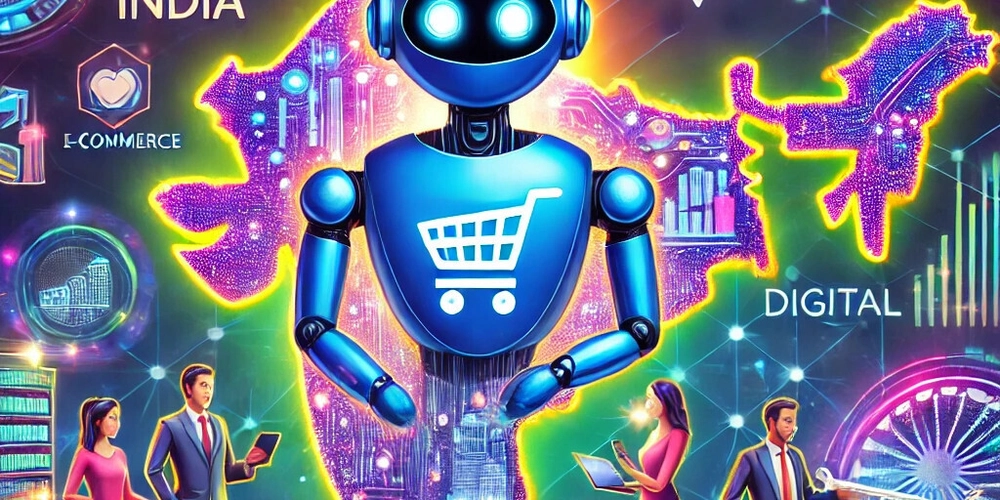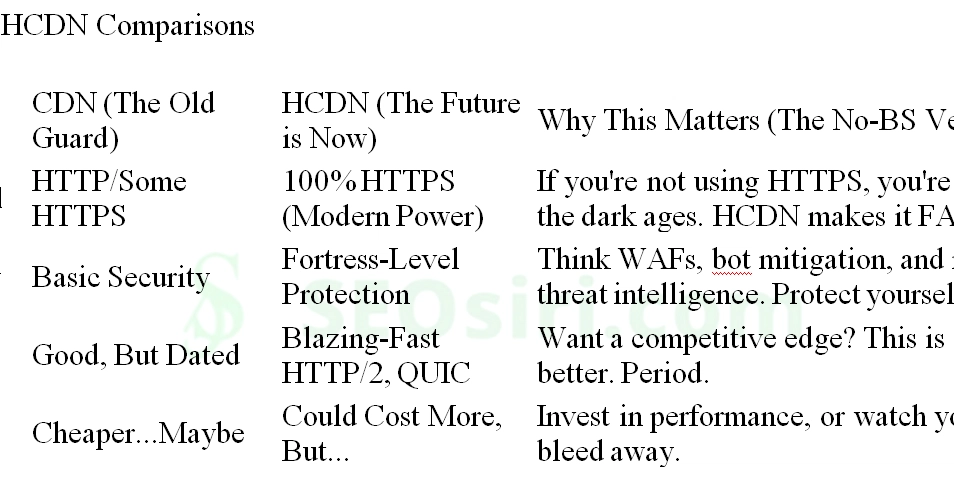Chatbot Market in India: Growth, Trends, and Future Prospects
India's chatbot market has been growing rapidly, driven by increasing digital adoption, rising internet penetration, and the widespread use of artificial intelligence (AI) across various sectors. With businesses striving to enhance customer experience and automate processes, chatbots have become an integral part of industries such as e-commerce, banking, healthcare, and customer service. This article explores the growth, trends, key players, and future prospects of the chatbot market in India. Market Overview The chatbot market in India is expected to witness significant growth in the coming years. According to market research reports, India's chatbot industry is projected to grow at a compound annual growth rate (CAGR) of over 25% during the next five years. Factors such as increasing smartphone usage, AI advancements, and the push for automation are contributing to this expansion. Key Drivers of Growth Rising Internet and Smartphone Penetration India has over 900 million internet users, with a significant portion accessing digital services through mobile devices. The widespread use of messaging apps like WhatsApp and Facebook Messenger has made chatbot integration more effective for businesses. AI and NLP Advancements The improvement in Natural Language Processing (NLP) and Machine Learning (ML) has enhanced chatbot capabilities, making them more efficient in handling complex queries. The rise of voice-enabled AI chatbots is further expanding the market. Adoption Across Industries Banking and Financial Services (BFSI): Banks and financial institutions use chatbots for customer support, loan processing, and fraud detection. E-commerce and Retail: Chatbots enhance customer engagement, provide recommendations, and assist with order tracking. Healthcare: AI-powered chatbots assist in patient consultations, appointment scheduling, and symptom analysis. Education: Edtech platforms use chatbots to provide personalized learning experiences and student support. Government Initiatives and Digital Push The Indian government’s push for Digital India and AI-driven initiatives has encouraged businesses to integrate chatbots for automation and efficiency. Public sector services, including railway inquiries and government helplines, have also adopted chatbot solutions. Key Trends in the Indian Chatbot Market 1. WhatsApp Chatbots Leading the Market With WhatsApp having over 500 million users in India, businesses are leveraging WhatsApp chatbots for customer service, marketing, and sales. E-commerce and fintech companies are using WhatsApp chatbots for seamless transactions and customer support. 2. Voice-Enabled Chatbots on the Rise Voice assistants like Alexa, Google Assistant, and Siri have set the stage for voice-based AI chatbots in India. Regional language support in AI chatbots is growing, making them accessible to a broader audience. 3. Integration with CRM and Business Tools Businesses are integrating chatbots with Customer Relationship Management (CRM) software, enabling seamless lead generation and customer service automation. AI-powered chatbots are being used to analyze customer behavior and provide personalized recommendations. 4. Sector-Specific Chatbot Adoption Healthcare chatbots like Lybrate and Practo are assisting in medical consultations. Financial chatbots such as HDFC Bank’s EVA and ICICI’s iPal are enhancing banking experiences. Edtech chatbots are helping students with interactive learning and doubt resolution. Major Players in the Indian Chatbot Market Several companies in India are at the forefront of chatbot development, offering AI-powered solutions for various industries. Some of the key players include: Ezeelive Technologies – Specializing in AI chatbot development and text-to-image AI solutions. Haptik (Acquired by Reliance Jio) – One of the largest conversational AI platforms in India. Yellow Messenger (now Yellow.ai) – Provides enterprise-grade AI chatbots. Senseforth.ai – Offers AI-driven automation for businesses. Gupshup – A major player in messaging and chatbot automation. Niki.ai – Focuses on chatbot-driven commerce solutions. Challenges in the Indian Chatbot Market Despite its growth, the Indian chatbot market faces several challenges: Language Barriers: India has multiple languages and dialects, making it difficult for AI chatbots to achieve full accuracy. User Resistance: Many users still prefer human interaction over chatbots, especially for complex queries. Data Privacy Concerns: AI-driven chatbots process vast amounts of user data, raising security and privacy concerns. Lack of Awareness Among SMEs: While large enterprises are adopting chatbots, small and medium-sized businesses (SMEs) are still lagging due to limited awareness and investment. Future Prospects The future of the chatbot market in India looks promising, with several advancements on the horizon: AI-Driven Conve

India's chatbot market has been growing rapidly, driven by increasing digital adoption, rising internet penetration, and the widespread use of artificial intelligence (AI) across various sectors. With businesses striving to enhance customer experience and automate processes, chatbots have become an integral part of industries such as e-commerce, banking, healthcare, and customer service. This article explores the growth, trends, key players, and future prospects of the chatbot market in India.
Market Overview
The chatbot market in India is expected to witness significant growth in the coming years. According to market research reports, India's chatbot industry is projected to grow at a compound annual growth rate (CAGR) of over 25% during the next five years. Factors such as increasing smartphone usage, AI advancements, and the push for automation are contributing to this expansion.
Key Drivers of Growth
Rising Internet and Smartphone Penetration
- India has over 900 million internet users, with a significant portion accessing digital services through mobile devices.
- The widespread use of messaging apps like WhatsApp and Facebook Messenger has made chatbot integration more effective for businesses.
AI and NLP Advancements
- The improvement in Natural Language Processing (NLP) and Machine Learning (ML) has enhanced chatbot capabilities, making them more efficient in handling complex queries.
- The rise of voice-enabled AI chatbots is further expanding the market.
Adoption Across Industries
- Banking and Financial Services (BFSI): Banks and financial institutions use chatbots for customer support, loan processing, and fraud detection.
- E-commerce and Retail: Chatbots enhance customer engagement, provide recommendations, and assist with order tracking.
- Healthcare: AI-powered chatbots assist in patient consultations, appointment scheduling, and symptom analysis.
- Education: Edtech platforms use chatbots to provide personalized learning experiences and student support.
Government Initiatives and Digital Push
- The Indian government’s push for Digital India and AI-driven initiatives has encouraged businesses to integrate chatbots for automation and efficiency.
- Public sector services, including railway inquiries and government helplines, have also adopted chatbot solutions.
Key Trends in the Indian Chatbot Market
1. WhatsApp Chatbots Leading the Market
With WhatsApp having over 500 million users in India, businesses are leveraging WhatsApp chatbots for customer service, marketing, and sales.
E-commerce and fintech companies are using WhatsApp chatbots for seamless transactions and customer support.
2. Voice-Enabled Chatbots on the Rise
Voice assistants like Alexa, Google Assistant, and Siri have set the stage for voice-based AI chatbots in India.
Regional language support in AI chatbots is growing, making them accessible to a broader audience.
3. Integration with CRM and Business Tools
Businesses are integrating chatbots with Customer Relationship Management (CRM) software, enabling seamless lead generation and customer service automation.
AI-powered chatbots are being used to analyze customer behavior and provide personalized recommendations.
4. Sector-Specific Chatbot Adoption
- Healthcare chatbots like Lybrate and Practo are assisting in medical consultations.
- Financial chatbots such as HDFC Bank’s EVA and ICICI’s iPal are enhancing banking experiences.
- Edtech chatbots are helping students with interactive learning and doubt resolution.
Major Players in the Indian Chatbot Market
Several companies in India are at the forefront of chatbot development, offering AI-powered solutions for various industries. Some of the key players include:
- Ezeelive Technologies – Specializing in AI chatbot development and text-to-image AI solutions.
- Haptik (Acquired by Reliance Jio) – One of the largest conversational AI platforms in India.
- Yellow Messenger (now Yellow.ai) – Provides enterprise-grade AI chatbots.
- Senseforth.ai – Offers AI-driven automation for businesses.
- Gupshup – A major player in messaging and chatbot automation.
- Niki.ai – Focuses on chatbot-driven commerce solutions.
Challenges in the Indian Chatbot Market
Despite its growth, the Indian chatbot market faces several challenges:
- Language Barriers: India has multiple languages and dialects, making it difficult for AI chatbots to achieve full accuracy.
- User Resistance: Many users still prefer human interaction over chatbots, especially for complex queries.
- Data Privacy Concerns: AI-driven chatbots process vast amounts of user data, raising security and privacy concerns.
- Lack of Awareness Among SMEs: While large enterprises are adopting chatbots, small and medium-sized businesses (SMEs) are still lagging due to limited awareness and investment.
Future Prospects
The future of the chatbot market in India looks promising, with several advancements on the horizon:
- AI-Driven Conversational Agents – Enhanced AI models will improve chatbot understanding, making them more efficient and human-like.
- Multilingual Chatbots – AI chatbots will continue to evolve with better regional language support to cater to India's diverse population.
- Hyper-Personalization – Chatbots will leverage AI and predictive analytics to provide personalized experiences to users.
- Integration with Emerging Technologies – The combination of chatbots with blockchain, IoT, and AR/VR will open new avenues for businesses.
- Regulatory Frameworks – Government regulations on AI and data privacy will shape the evolution of chatbot technology in India.
Conclusion
Chatbot Market in India is experiencing rapid growth, fueled by technological advancements, increasing digital penetration, and business automation needs. With evolving AI capabilities, integration with voice technology, and sector-specific innovations, chatbots will continue to play a crucial role in transforming customer engagement and operational efficiency across industries. While challenges remain, the future of chatbots in India is promising, making them a critical component of the digital transformation journey.











































































































































































![[The AI Show Episode 142]: ChatGPT’s New Image Generator, Studio Ghibli Craze and Backlash, Gemini 2.5, OpenAI Academy, 4o Updates, Vibe Marketing & xAI Acquires X](https://www.marketingaiinstitute.com/hubfs/ep%20142%20cover.png)




























































































































![[DEALS] The Premium Learn to Code Certification Bundle (97% off) & Other Deals Up To 98% Off – Offers End Soon!](https://www.javacodegeeks.com/wp-content/uploads/2012/12/jcg-logo.jpg)


![From drop-out to software architect with Jason Lengstorf [Podcast #167]](https://cdn.hashnode.com/res/hashnode/image/upload/v1743796461357/f3d19cd7-e6f5-4d7c-8bfc-eb974bc8da68.png?#)








































































































.png?#)

































_Christophe_Coat_Alamy.jpg?#)
 (1).webp?#)





































































































![Apple Considers Delaying Smart Home Hub Until 2026 [Gurman]](https://www.iclarified.com/images/news/96946/96946/96946-640.jpg)
![iPhone 17 Pro Won't Feature Two-Toned Back [Gurman]](https://www.iclarified.com/images/news/96944/96944/96944-640.jpg)
![Tariffs Threaten Apple's $999 iPhone Price Point in the U.S. [Gurman]](https://www.iclarified.com/images/news/96943/96943/96943-640.jpg)




































































































































